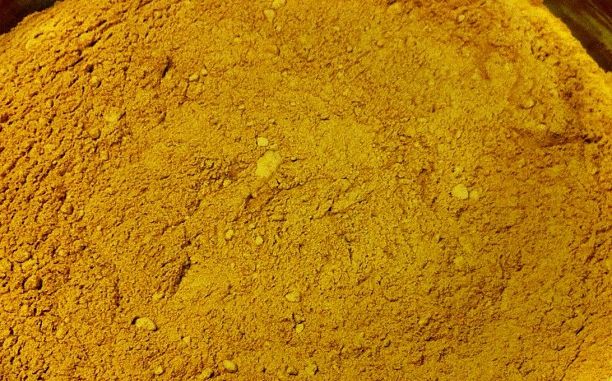How to Make a Dry Roux in the Oven

Roux: What’s All The Fuss About?
Without roux there is no gumbo.
For gumbo, a traditional roux is equal parts oil and flour. Essentially, you are frying the flour in the oil until it becomes the color of dark chocolate (but without burning it!). Why do we do this? Because roux adds a depth of color and flavor to the gumbo that it would not have otherwise. It also thickens up the gumbo, setting it apart from any other kind of soup.
Why a Dry Roux?
Making a roux is a delicate process. It is easy to lose your patience, turn the heat up, and accidentally burn the roux. Burnt roux does not smell very good. And a burnt roux means you have to start over from scratch… if you want gumbo, that is.
Making a traditional roux can take up to 30 minutes, if you do it right. When asked how long it takes to make a roux, many Cajuns will respond indicating the number of beers or Martinis it takes, not minutes. “It’s a two Martini roux.”
I’ve seen rouxs made with olive oil, canola oil, vegetable oil, and Crisco vegetable shortening, but I tend to stay away from those. I’ve seen rouxs made with butter, reduced chicken fat, goose fat, coconut oil, and even the grease from andouille. I like those. When making a roux with oil, you need to choose something with a high smoke point. You don’t want the oil to burn.
Any kind of flour will do. All-Purpose. Bread flour. That really doesn’t matter much. The main thing is that you use equal parts oil and flour, and that you don’t burn it. Recently, I’ve started adding a little more flour that oil. I find that it speeds the process up a bit.
An alternative to the traditional oil and flour roux, is a dry roux made in the oven. It takes longer to make the roux, but it demands less attention. In my experience, the results are the same. Just less mess and more time to chop onions, bell peppers, and celery.
INGREDIENTS
- 3 cups All-Purpose Flour (I prefer King Arthur flour)
DIRECTIONS
For Preparing the Roux
- Distribute 3 cups of flour evenly over the dry bottom of a large iron skillet or heavy Dutch oven.
- Place skillet in a 400 degree oven for an hour to an hour-and-a-half. Stir well every 15 minutes so that the flour will brown evenly. Note: toward the end of the cook time (maybe the last 20 minutes or so), you will need to stir more frequently. Let your nose dictate the time. The kitchen will be filled with the wonderful nutty fragrance of roux… but you don’t want it to burn.
- Once it has reached the color of peanut butter, remove the skillet from the oven and let it cool. Note: The roux will actually darken in color when added to water, oil, or when added directly to a gumbo.
For Use
Use the amount called for in the gumbo recipe. For example, 1 cup or 3/4 cup. Whatever it may be.
When ready to use, you can mix equal parts dry roux and water until smooth. Or you can add an equal portion of dry roux to heated oil in a skillet and mix thoroughly. No need to brown it any further.
I like to add the dry roux by itself to the pot of onions, bell peppers, and celery as they finish sautéing. Then I add the andouille (after degreasing and slicing) and let that sauté for a bit before adding the stock.
This dry roux can be stored in a glass jar for future use.
What About You?
Do you have any roux-making tips? Or maybe a roux-making catastrophe story or two? I’d love to hear about it! Leave a comment below!